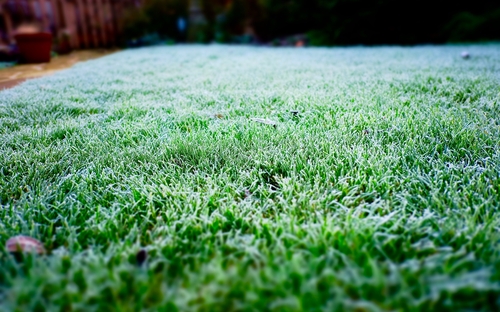Proper Lawn Care After A Cold Winter
Read MorePosted on: Jan 17, 2024Luis M Pérez
After a cold winter, proper lawn care ensures a healthy and vibrant lawn throughout the warmer seasons. Here are some best practices.

Remove Debris:
Start by clearing away debris, such as fallen leaves, branches, or other items that may have accumulated over the winter. This allows the grass to receive adequate sunlight and promotes healthy growth.
Raking:
Rake the lawn to remove thatch, a layer of dead grass and roots. Thatch can inhibit water and nutrients from reaching the soil. Raking also helps to loosen compacted soil, allowing air and water to penetrate.
Aeration:
Consider aerating your lawn to relieve soil compaction. Liquid Aerating involves perforating the soil to allow air, water, and nutrients to reach the grassroots. This promotes more robust root growth and overall turf health.
Fertilization:
Apply a balanced fertilizer to replenish nutrients that may have been depleted during the winter. Choose a fertilizer with a nitrogen-phosphorus-potassium (NPK) ratio suitable for your specific grass type and follow the recommended application rates.
Overseeding:
If your lawn has bare patches or thin areas, overseeding can help improve density. Choose high-quality grass seed that matches your yard, and spread it evenly over the prepared soil. Water thoroughly after overseeding.
Proper Mowing:
Adjust your mower height to an appropriate setting for your grass type. Avoid cutting more than one-third of the grass height at once, as this can stress the turf. Regular mowing encourages lateral growth and a denser lawn.
Watering:
Ensure your lawn receives sufficient water. Deep and infrequent watering is generally more effective than frequent shallow watering. Early morning is the best time to water, as it allows the grass to dry before evening, reducing the risk of diseases.
Weed Control:
Keep an eye out for weeds and address them promptly. Apply a pre-emergent herbicide early in the season to prevent weed seeds from germinating. For existing weeds, use a targeted post-emergent herbicide.
Pest Management:
Monitor your lawn for signs of pests such as grubs or insects. If necessary, apply insecticides or biological controls to prevent damage to the grass.
Mulching:
Consider mulching grass clippings back into the lawn. This returns valuable nutrients to the soil and can contribute to a healthier lawn.
Lawn Equipment Maintenance:
Ensure your lawn equipment, such as mowers and trimmers, is in good working condition. Sharp blades provide cleaner cuts, reducing stress on the grass.
Questions?
Following these best practices, you can promote a lush and resilient lawn after a cold winter, setting the foundation for a beautiful outdoor space. If you have any questions, please feel free to contact our lawn care expert, Luis M Perez, at luisp@doctorgreen.com

